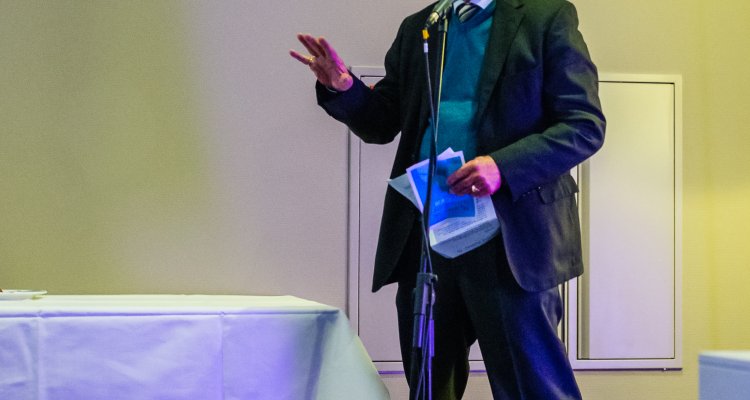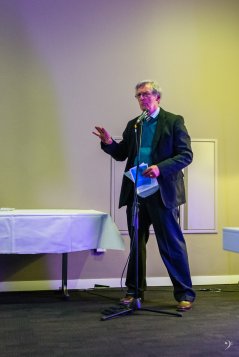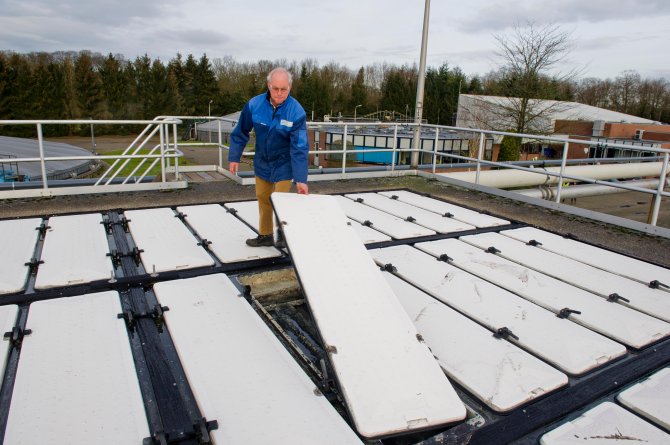
3 ETE discoveries in the past 50 years: 1. Closing cycles using anaerobic wastewater cleaning
In the early 1970’s former ETE professor Gatze Lettinga designed a new technology of wastewater cleaning: the Up-flow Anaerobic Sludge Bed (UASB) reactor. This new anarobic method was a large improvement compared to traditional aerobic wastewater processing. It is simpler, more cost-effective, while energy and nutrients can easily be recovered. More than forty years later, the UASB reactor is still widely implemented for wastewater treatment all around the globe.
Within two weeks after he was appointed at ETE in 1970, Lettinga came across a scientific paper on the so-called anaerobic filter (AF) aimed to clean wastewater. The new design consisted of a barrel filled with packing material where anaerobic bacteria could attach on. An up-flow wastewater stream provided feed and nutrients for these microorganisms.
Based on this principle, Lettinga improved the AF-system and developed the UASB-system; any filter filling material was not needed in this reactor system. The bacteria form a granular type of sludge, which induces the formation of a thick sludge bed in the bottom part of the reactor. This sludge can clean high amounts of wastewater: the anaerobic bacteria convert degradable organic material into methane (biogas), CO2 and small amounts of hydrogen sulfide (H2S). After this first purification step, a second micro-aerobic treatment step was developed in order to remove small amounts of remaining biodegradable pollutants and H2S by converting it into elementary sulfur.

World-wide application
The first demonstration scale UASB reactor was tested in 1975. A year later, a commercial, full-scale version was implemented to treat wastewater of sugar beet factories of the Dutch sugar company CSM. Because of its pronounced advantages the technology was soon used world-wide for industrial wastewater cleaning.
However, the UASB could not be easily implemented for sewage treatment in the Western World: conventional aerobic treatment had been already been implemented there for that purpose. In addition, in most industrialized countries the sewage temperature is too low for anaerobic treatment. ‘The optimal temperature for anaerobic microorganisms is between 30 and 40 degrees Celsius’, Lettinga explains. ‘In our regions sewage temperatures are too low during the winter season.’ But in many tropical countries the system does function very well for sewage due to the warmer climate. The UASB-system is presently successfully used in many tropical countries for both sewage and industrial waste water.
Costly infrastructure
Today, the existing sewage treatment in Europe is still based on aerobic cleaning principles, combined with extended sewerage systems. An energy-inefficient and expensive approach, according to Lettinga. ‘The central cleaning of sewage requires an extremely costly infrastructure to transport toilet waste, while energy from organic material breakdown cannot be sufficiently recovered’, he explains. ‘Flush toilets waste clean water and result in highly diluted sewage streams, making recovery of nutrients very difficult.’ The introduction of flushing toilets combined with a central sewer system in the previous century has been a dramatic development, according to the former professor. Besides extensive costs, it also resulted in closing individual sceptic tanks widely installed at separate residences worldwide. Lettinga: ‘In The Netherlands, costs made for connecting separate houses to the central sewer system in rural areas were over 15 billion euros and it didn’t contribute to any improvement of the environment.’
Preventing dilution
Lettinga has a very clear vision on improved future public sanitation. It should be optimally decentralized and apply the UASB technology as a basis, combined with aerobic treatment systems. It should be implemented on site in residential areas; expensive sewer transport systems are not needed anymore. In addition, toilet waste should be collected using vacuum toilets, preventing dilution. Recovering nutrients, like phosphorous, nitrogen, and sulfur, proceeds much easier from concentrated waste. Matured sludge, containing many un-degradable organic components, can subsequently be harvested and used for soil improvement.
Strict laws
Despite huge advantages of anaerobic sewage treatments, large-scale implementation has proved to be rather difficult. According to Lettinga, one reason is the commercial interests of the ‘aerobic treatment establishment’. Companies building aerobic cleaning systems obviously don’t benefit from implementing alternative systems, even though UASB technology constitutes the better technology, for on-site applications. In addition, strict regulations regarding security rules regarding catching biogas in the Netherlands make implementation of these systems very difficult. ‘These are absurdly stringent’, Lettinga says. ‘Various local governments do want to change to a better sanitation systems, but these regulations make it impossible.’
